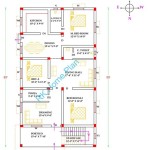Small Greenhouse Plans: A Comprehensive Guide for Gardeners
### Introduction Are you passionate about gardening and want to extend your growing season? Building a small greenhouse can be a rewarding and worthwhile project, allowing you to cultivate plants year-round, regardless of the weather conditions. With careful planning and execution, you can create a functional and aesthetically pleasing greenhouse that suits your needs and budget. This comprehensive guide will provide you with step-by-step instructions, essential considerations, and helpful tips to help you successfully design and build your own small greenhouse. ### Step 1: Selecting a Suitable Location Choosing the right location for your greenhouse is crucial for its success. Consider the following factors: *Sunlight Exposure:
Greenhouses thrive in areas with ample sunlight, ideally receiving at least 6-8 hours of direct sunlight per day. Avoid shady spots or areas obstructed by buildings or trees. *Wind Protection:
Strong winds can damage your greenhouse, so select a location that is sheltered from prevailing winds. Consider installing windbreaks or choosing a spot surrounded by natural windbreaks, such as trees or shrubs. *Accessibility:
Ensure that the greenhouse is easily accessible from your home and garden. This will make it convenient for you to tend to your plants and maintain the greenhouse. *Space and Layout:
Measure the available space and plan the layout of your greenhouse accordingly. Consider the size of the plants you intend to grow and allow for adequate space for walkways and work areas. *Drainage:
Select a well-drained area to prevent waterlogging, which can harm your plants and damage the greenhouse structure. ### Step 2: Choosing Greenhouse Materials The choice of materials for your greenhouse will depend on your budget, preferences, and the desired level of durability. Common materials used for small greenhouses include: *Polycarbonate Panels:
Polycarbonate is a popular choice due to its durability, light transmittance, and insulation properties. It is shatter-resistant and can withstand harsh weather conditions. *Glass Panels:
Glass greenhouses offer excellent light transmission and provide a classic, elegant look. However, glass is more expensive and fragile than other materials. *Plastic Sheeting:
Plastic sheeting is an affordable and lightweight option. It is easy to install but may require more frequent replacement due to its susceptibility to UV damage and tearing. *Wood:
Wood is a versatile material that can be used for the greenhouse frame and cladding. It is sturdy, durable, and can be stained or painted to match your garden design. *Metal:
Metal frames are sturdy and can withstand strong winds. However, metal can be more expensive and requires proper maintenance to prevent corrosion. ### Step 3: Designing Your Greenhouse The design of your greenhouse should consider the following aspects: *Size and Shape:
Determine the size of the greenhouse based on your space constraints and the number of plants you intend to grow. Common shapes include A-frame, hoop house, and lean-to greenhouses. *Roof Pitch:
The roof pitch affects the amount of sunlight entering the greenhouse and the drainage of rainwater. A steeper roof pitch allows for better drainage and prevents snow accumulation, but it may require more materials. *Ventilation:
Proper ventilation is essential for maintaining a healthy environment for your plants. Include windows, vents, or fans to regulate temperature and humidity levels. *Door Placement:
Plan the location of the door to ensure easy access to the greenhouse and to facilitate the movement of equipment and plants. *Internal Layout:
Consider the layout of the greenhouse, including the placement of benches, shelves, and workspaces. Design the layout to maximize space utilization and create an efficient workspace. ### Step 4: Preparing the Foundation A solid foundation is crucial for the stability and longevity of your greenhouse. Options for the foundation include: *Concrete Slab:
A concrete slab provides a stable and level base for your greenhouse. It is durable and can withstand heavy loads. However, it is more expensive and time-consuming to install. *Gravel Base:
A gravel base is a cost-effective and relatively easy-to-install option. Ensure that the gravel is compacted properly to provide a stable surface. *Wood Foundation:
A wood foundation is a suitable option if you prefer a more natural look. Use pressure-treated wood to prevent rot and decay. ### Step 5: Constructing the Greenhouse Frame Follow these steps to construct the greenhouse frame: 1.Prepare the Materials:
Gather all the necessary materials, including the frame components, connectors, screws, and tools. 2.Assemble the Frame:
Start by assembling the base frame according to the manufacturer's instructions. Then, attach the sidewalls and roof panels, ensuring proper alignment and securing them with the provided connectors and screws. 3.Secure the Structure:
Reinforce the frame by adding additional supports, such as cross-braces and gussets, to ensure stability in windy conditions. 4.Install the Door and Windows:
Install the door and windows according to the manufacturer's instructions, ensuring that they open and close smoothly. ### Step 6: Covering the Greenhouse The greenhouse covering material protects your plants from the elements and creates a controlled environment. Follow these steps: 1.Prepare the Covering Material:
Cut the covering material to the desired size, leaving a few inches of overlap on all sides. 2.Attach the Covering Material:
Start by attaching the covering material to the roof, using staples or screws, ensuring it is taut and secure. Then, attach the material to the sidewalls, again ensuring a tight fit. 3.Seal the Seams:
Use sealant or weatherstripping to seal the seams and gaps between the covering material and the frame to prevent water leakage and drafts. ### Step 7: Installing Ventilation and Heating Proper ventilation and temperature control are essential for the well-being of your plants. Consider the following: *Ventilation:
Install windows, vents, or fans to regulate airflow and temperature. Position them strategically to promote cross-ventilation and prevent stagnant air. *Heating:
If you plan to use the greenhouse during the colder months, consider installing a heating system, such as a space heater or a hot water system, to maintain the desired temperature for your plants. ### Step 8: Setting Up the Interior Once the greenhouse is complete, set up the interior to create an optimal environment for your plants: *Flooring:
Install a suitable flooring material, such as gravel, pavers, or raised beds, to provide good drainage and easy maintenance. *Benches and Shelves:
Add benches or shelves to organize your plants and create a convenient workspace. Use sturdy materials that can withstand moisture and weight. *Lighting:
If you plan to use the greenhouse during the darker months, install artificial lighting fixtures to supplement natural light and extend the growing season. *Water Supply:
Ensure that you have a reliable water source nearby to conveniently water your plants. Consider installing a rainwater harvesting system to collect and utilize rainwater for irrigation. ### Maintenance and Care Regular maintenance and care are essential to keep your greenhouse in good condition and ensure the health of your plants: *Clean the Greenhouse:
Regularly clean the greenhouse, including the covering material, windows, and interior surfaces, to remove dirt, debris, and algae. This will help maintain good light transmission and prevent the buildup of pests and diseases. *Inspect the Structure:
Periodically inspect the greenhouse frame, covering material, and foundation for any signs of damage or wear and tear. Repair or replace damaged components promptly to maintain the integrity of the structure. *Monitor Temperature and Humidity:
Keep an eye on the temperature and humidity levels inside the greenhouse and adjust them as needed. Use thermometers and hygrometers to monitor these parameters. *Water and Fertilize Plants:
Water and fertilize your plants regularly according to their specific needs. Ensure proper drainage to prevent overwatering. ### Conclusion Building a small greenhouse can be a rewarding experience that allows you to enjoy fresh produce, extend the growing season, and create a beautiful and functional space in your garden. By carefully planning, selecting suitable materials, and following the steps outlined in this guide, you can successfully construct a greenhouse that meets your needs and provides a thriving environment for your plants. With proper maintenance and care, your small greenhouse will be a source of enjoyment and satisfaction for years to come.
28 Diy Backyard Greenhouses And Simple Greenhouse

1137 Mini Greenhouse Plans Outdoor Small

9 Diy Mini Greenhouse Ideas The Family Handyman

12 Diy Greenhouse Plans For Gardeners On A Budget Bob Vila

8 X 9 Greenhouse Plans Diy Easy Framed Gabled Build How To Joinery Tutorial Instant

28 Diy Backyard Greenhouses And Simple Greenhouse

Small Gable Roof Greenhouse Ana White

12 Diy Greenhouse Plans For Gardeners On A Budget Bob Vila

28 Diy Backyard Greenhouses And Simple Greenhouse

6 X 12 Greenhouse Plans Printed Version Backyard Garden Design Home








